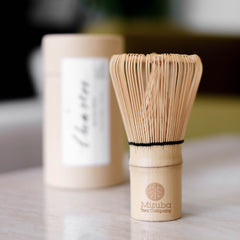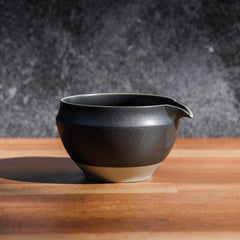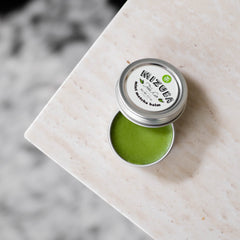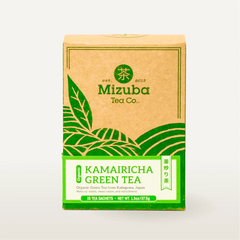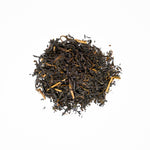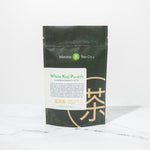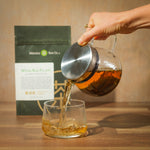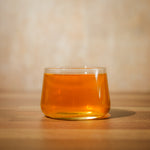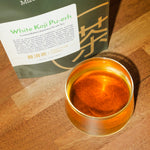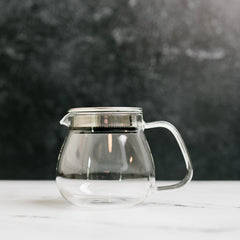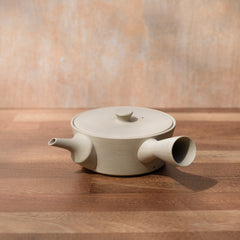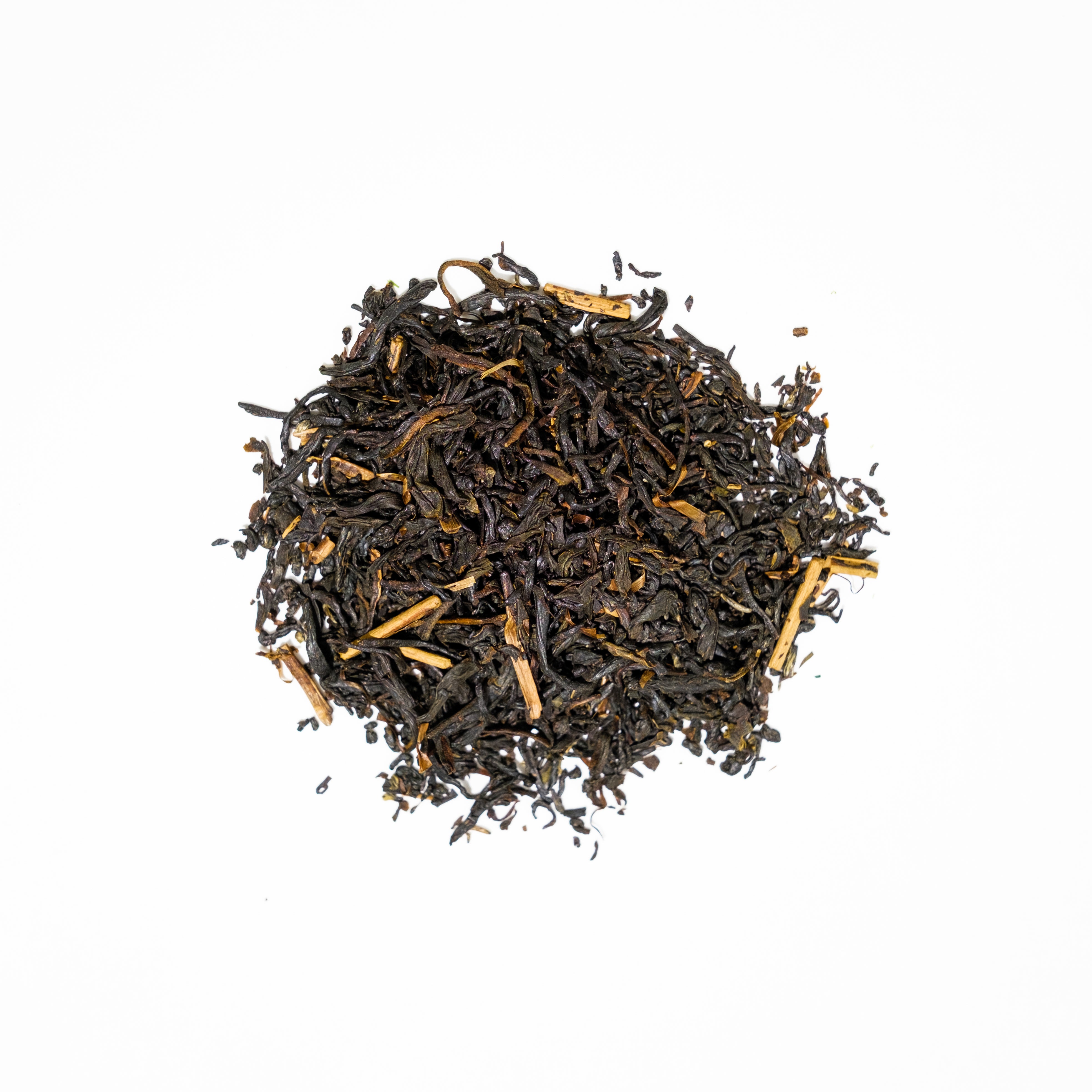
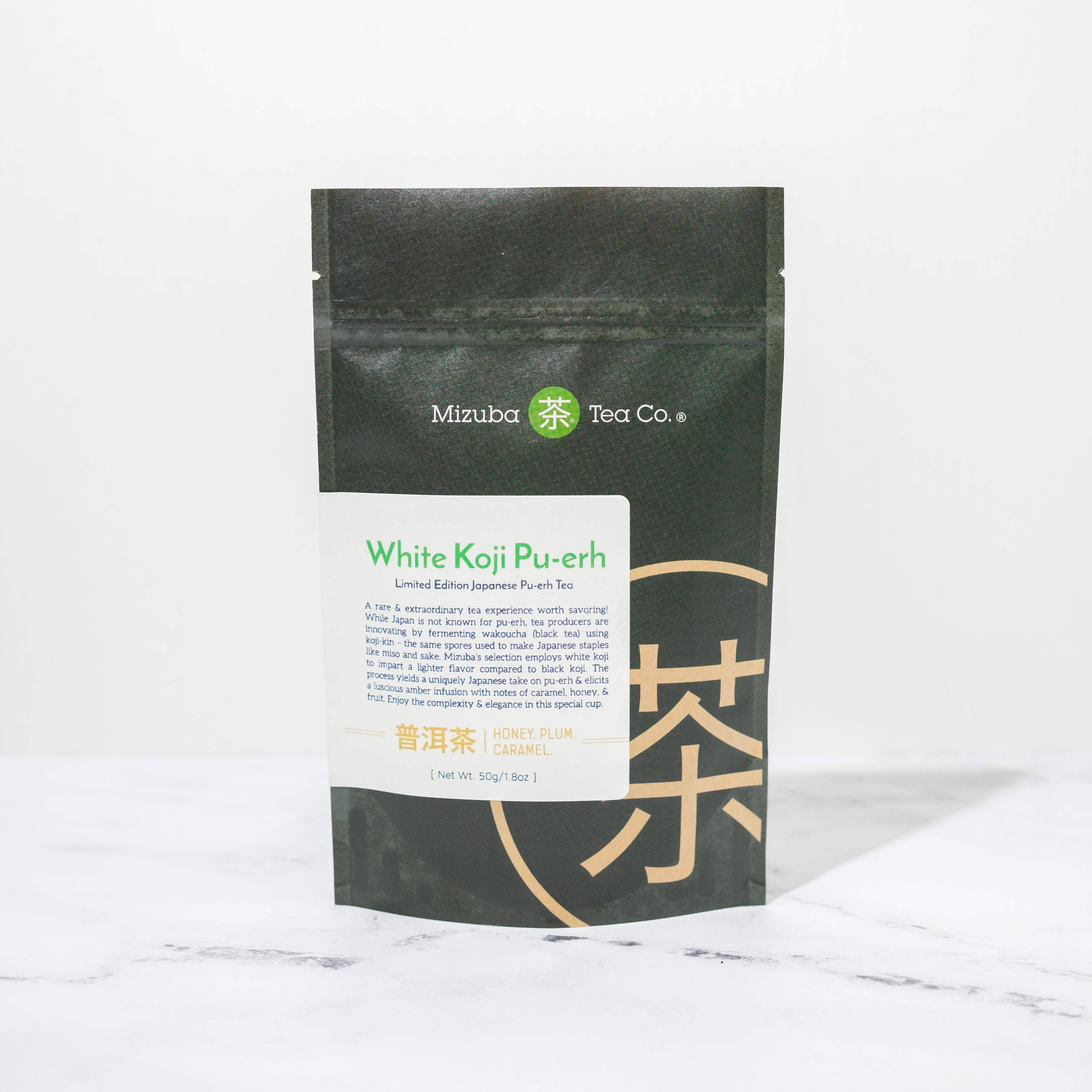
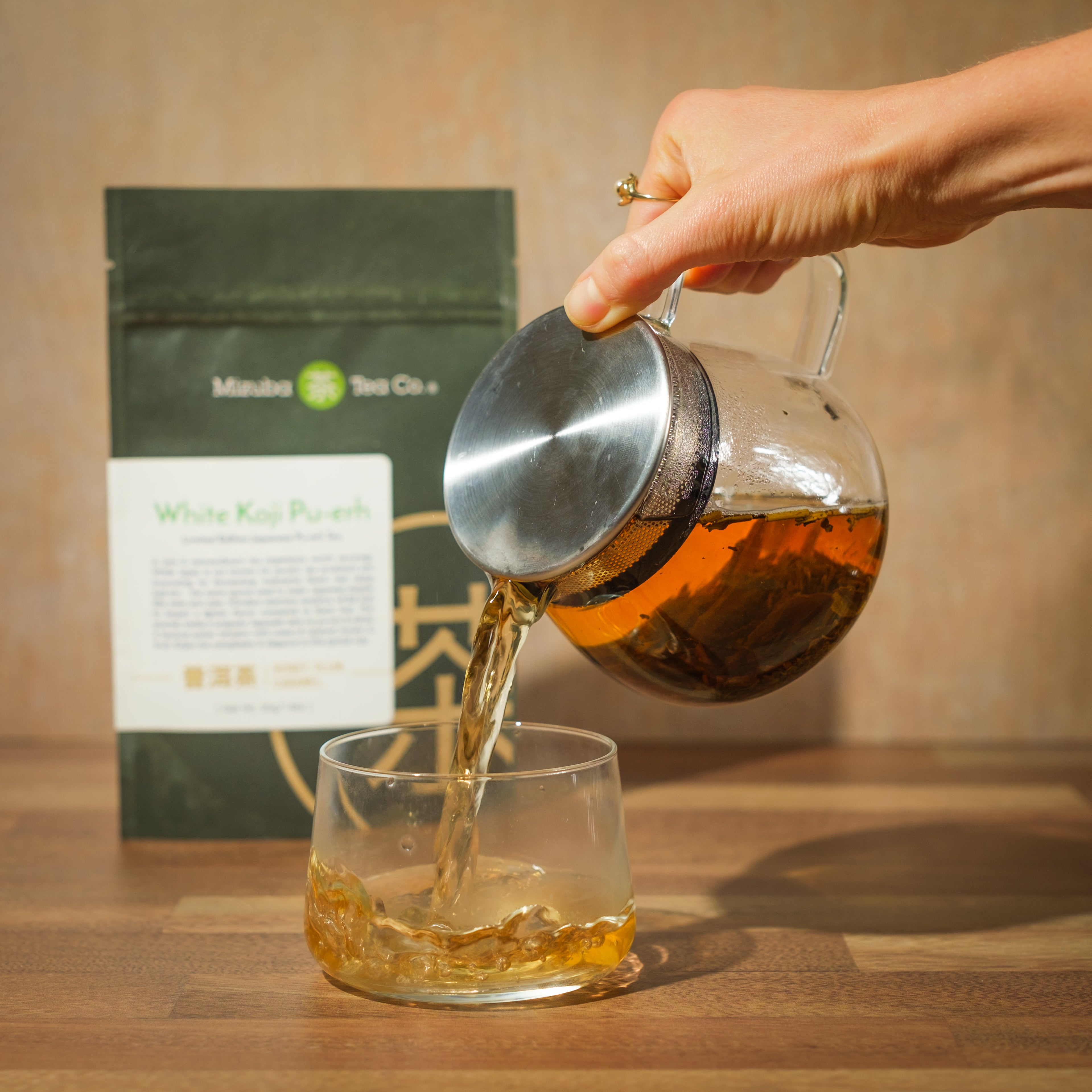
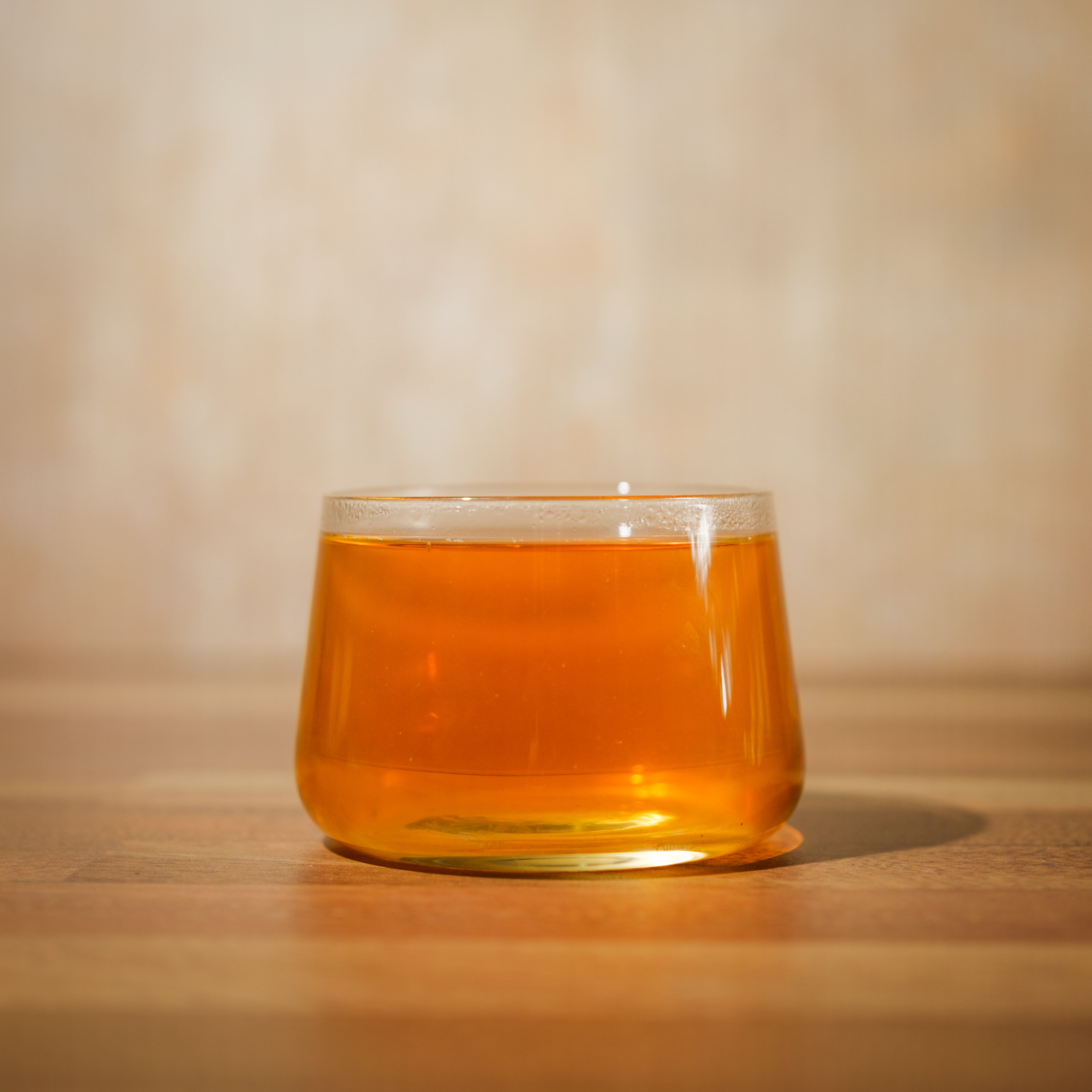
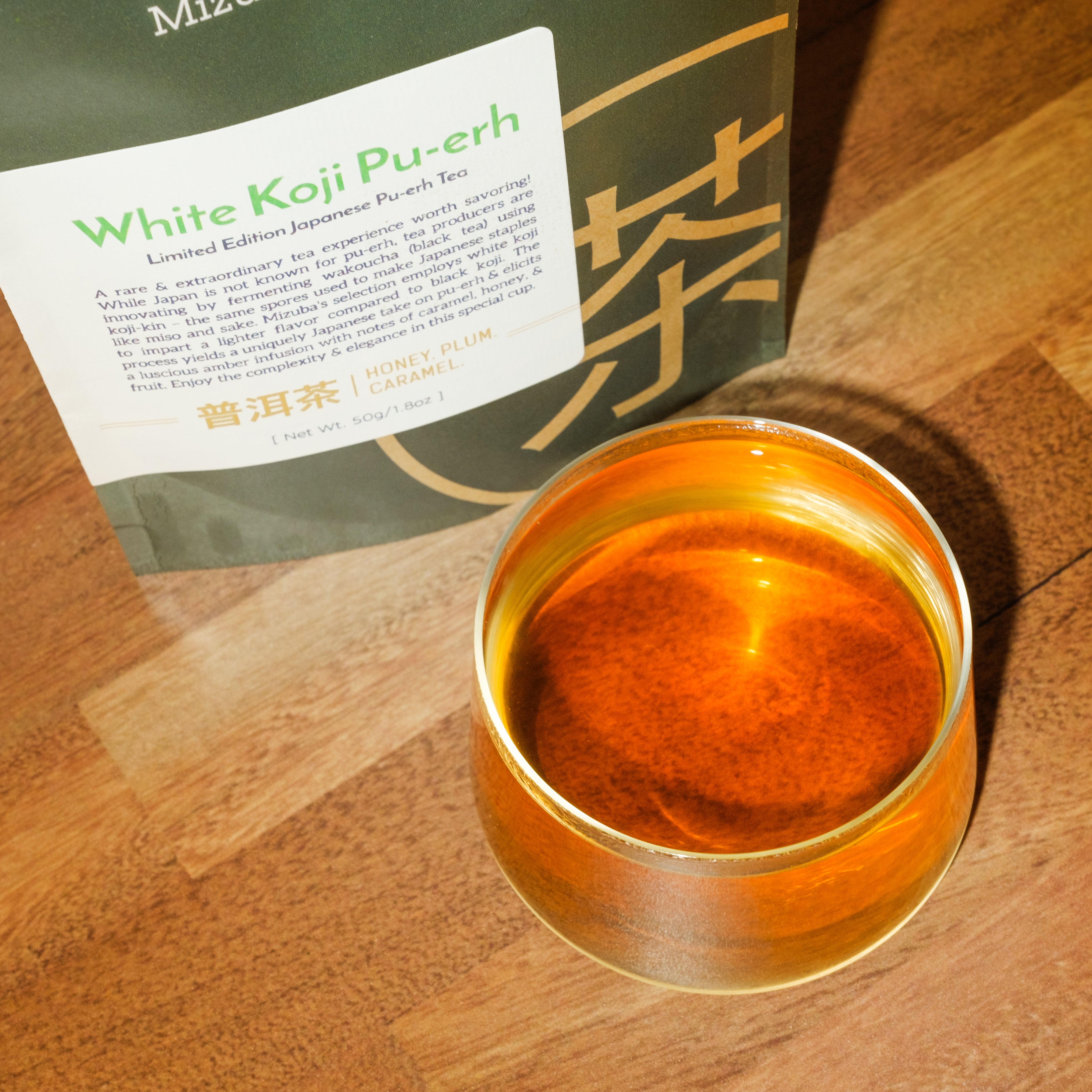
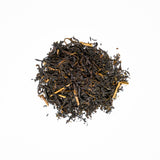
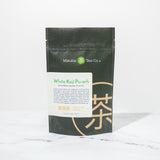
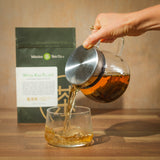

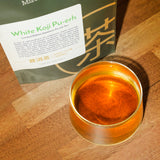
White Koji Pu-erh
- Description
- Tasting Notes
A rare and unique opportunity to try a one-of-a-kind tea! Japan is not known for pu-erh, but there are a few tea producers who are starting to experiment with fermenting wakoucha (black tea) with koji-kin (asperillus oryzae mold spores). Koji is also used to make popular Japanese foods like soy sauce, miso, and sake.
Mizuba's pick is fermented with white koji ( Shirokoji 白麹), which is often used to brew shōchū and has a lighter taste than black koji. The fermentation gives rise to a rich, amber liquor with lush aromas of caramel, honey, and fruit. We love the complexity and refinement of this elegant and unusual tea! 
Aroma: caramel, dark honey, and cooked fruit.
Flavor profile: delightfully like fruit leather. Plum and prune forward, with raspberry notes lingering on the palate.
Store in a cool, dark location. Best consumed within 3 months.
White Koji Pu-erh
Brew Guide

180ml (6oz)

5.5g (5tsp)

198ºF

1.5-3 minute steep
What is Pu-erh?
Pu-erh tea originates from China's Yunnan Province. Pu-erh is a very specific style of tea that is different than other tea categories (white, green, oolong, black etc.). Pu-erh leaves are fermented rather than oxidized. Japan does not generally make pu-erh as a style, which makes this offering particularly exciting and highly unusual. We recommend trying a Chinese Sheng pu-erh and tasting our koji-fermented tea in comparison.
Tea Details:
Location: Tanegashima Island, Kagoshima Prefecture
Harvest Season: second harvest
Cultivar: Saemidori and Yutakamidori cultivars
Process: our pu-erh style tea ferments just like Chinese pu-erh. The first stage in the fermentation process allows koji mold to grow properly into the tea.
The second stage is where carefully regulated, closed environments are subject to changing temperature, allowing bacteria to ferment and change tea components – aka, developing flavor!
- Related products
- Recently viewed
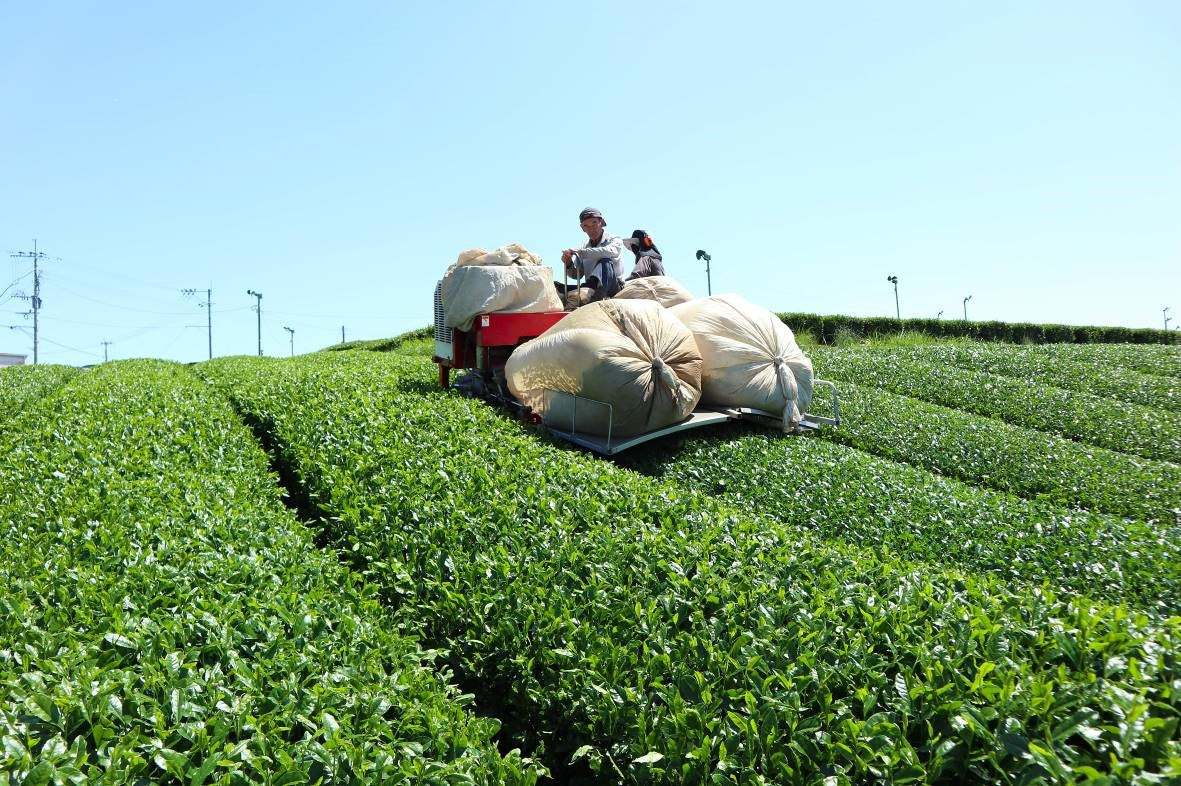
Featured post
A Guide to Harvesting Tea Leaves: An Essential Process in Japanese Green Tea
As with all processes in crafting Japanese green tea, harvesting tea leaves is an intricate skill that takes years to master. Much of the year is dedicated to the elaborate...


